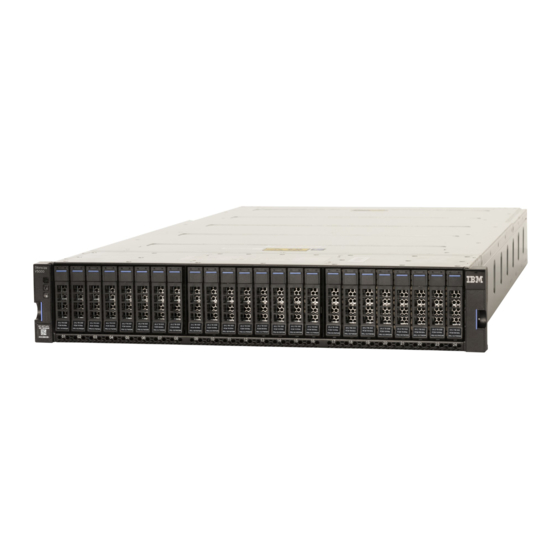
Summarization of Contents
Safety and environmental notices
Safety notices and labels
Review safety notices and information labels before using the product.
Caution notices for the system
Understand system caution notices and use reference numbers to find matching translated notices.
Danger notices for the system
Familiarize with danger notices for the system and observe precautions when working on or around the system.
General safety
Follow general safety guidelines and rules for safe servicing of the Storwize V5100.
Chapter 1. Before you begin the installation
Reviewing your packing slip
Verify shipment contents against the packing slip and ensure all ordered items are included.
Identifying the hardware components
Identify hardware components and port locations for control and expansion enclosures.
Verify environmental requirements
Ensure physical site meets environmental and electrical requirements for reliable system operation.
Review enclosure location guidelines
Guidelines for positioning enclosures in the rack for stability, accessibility, and airflow.
Chapter 2. Installing the system hardware
Installation overview
System installation and initial configuration are your responsibility, following the plan.
Unpacking the Storwize V5100 control enclosure
Procedure for unpacking the control enclosure and its components from the shipping carton.
Installing a Storwize V5100 control enclosure
Procedure to install the control enclosure into the rack onto the supplied rails.
Unpacking an optional 5U expansion enclosure
Review instructions and safety notices before unpacking an optional 5U expansion enclosure.
Installing an optional 5U SAS expansion enclosure
Guidelines for installing the optional 5U SAS expansion enclosure, including safety and weight considerations.
Powering on the system
After installing hardware, power on the system and check its status.
Chapter 3. Configuring the system
Checking your web browser settings for the management GUI
Ensure web browser is supported and settings are enabled for management GUI access.
Initializing the control enclosure
Connect Ethernet cable to technician port to initialize the system using a web browser.
Completing the initial system setup
Use the management GUI to perform initial system setup tasks after service setup is complete.
Appendix A. Accessibility features for the system
Accessibility features
Major accessibility features for the system, including screen reader support and standard navigation keys.
Keyboard navigation
Use keys or key combinations for operations and menu actions, accessible via browser or screen-reader.
Appendix C. Control enclosure requirements
Safety notices
General safety information for all rack-mounted devices, including DANGER and CAUTION statements.
Power requirements for each power supply (two per enclosure)
Ensure environment meets power requirements; details PSU ratings for planning.
Environmental requirements
System airflow is from front to rear; ensure environment meets temperature ranges.
Appendix D. SAS expansion enclosure requirements
Power requirements for each power supply (two per enclosure)
Ensure environment meets power requirements; details PSU ratings for planning.
Environmental requirements
System airflow is front to rear; ensure environment meets temperature ranges.
Notices
Electromagnetic compatibility notices
Class A statements apply unless designated Class B; monitor cable and interference suppression devices must be used.
European Community and Morocco Notice
Product conforms to EU Directive 2014/30/EU; avoid residential use without special measures.
United States Federal Communications Commission (FCC) Notice
Class A digital device compliance; may cause interference if not installed per manual; must accept interference.






Need help?
Do you have a question about the Storwize V5100 MTM 2078-U5B and is the answer not in the manual?
Questions and answers